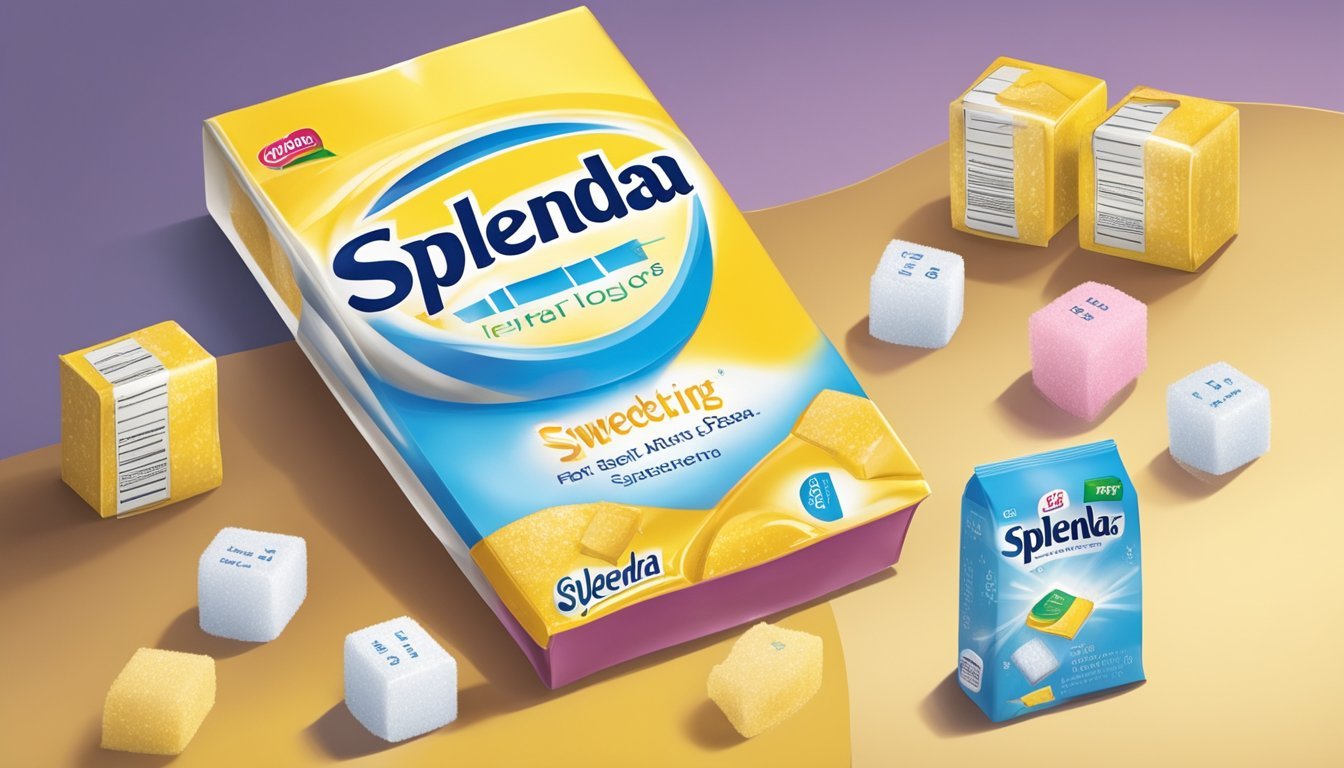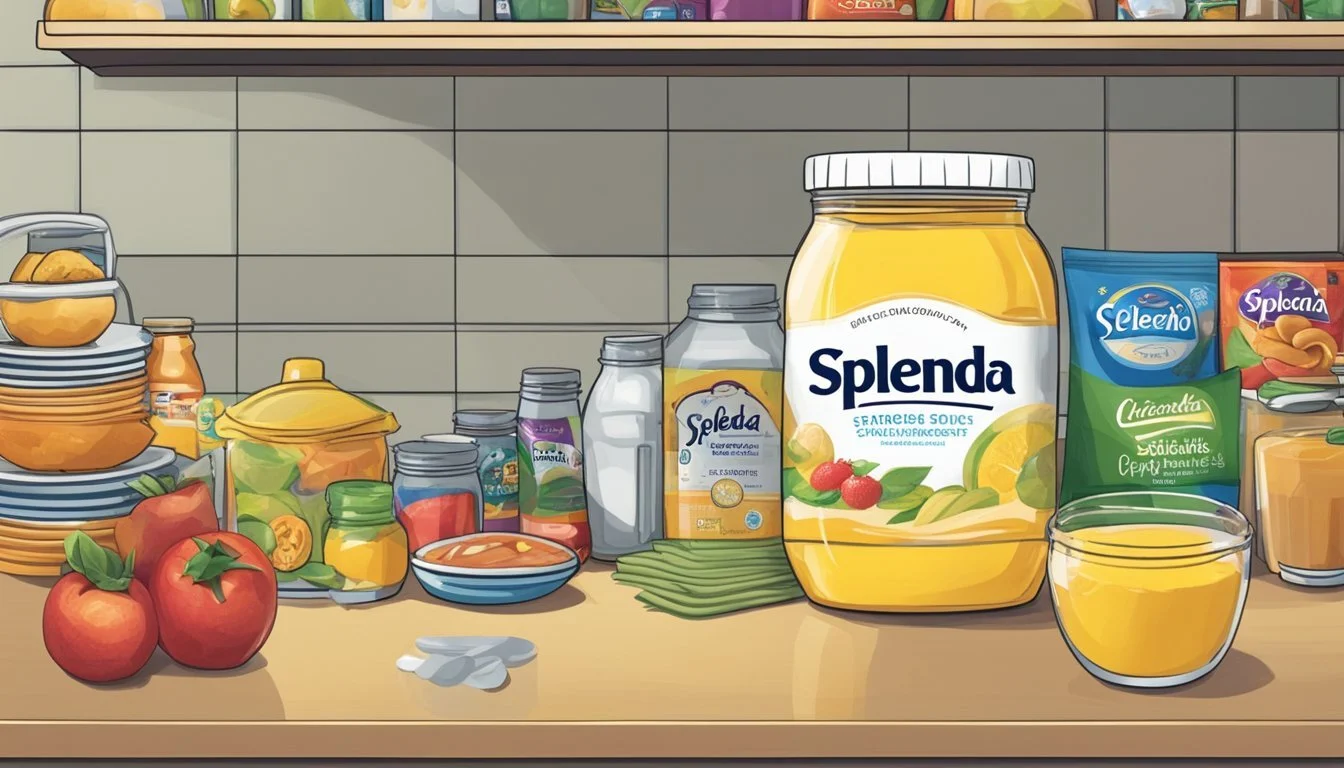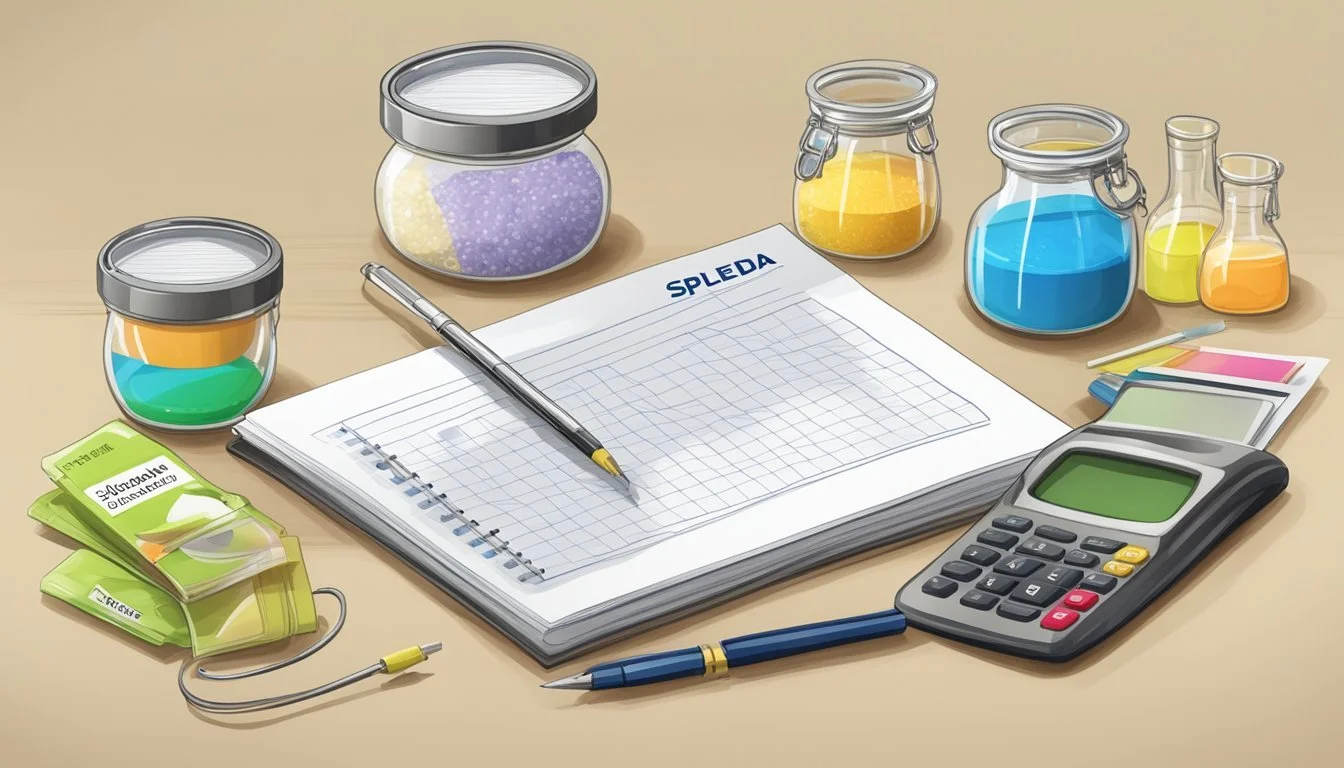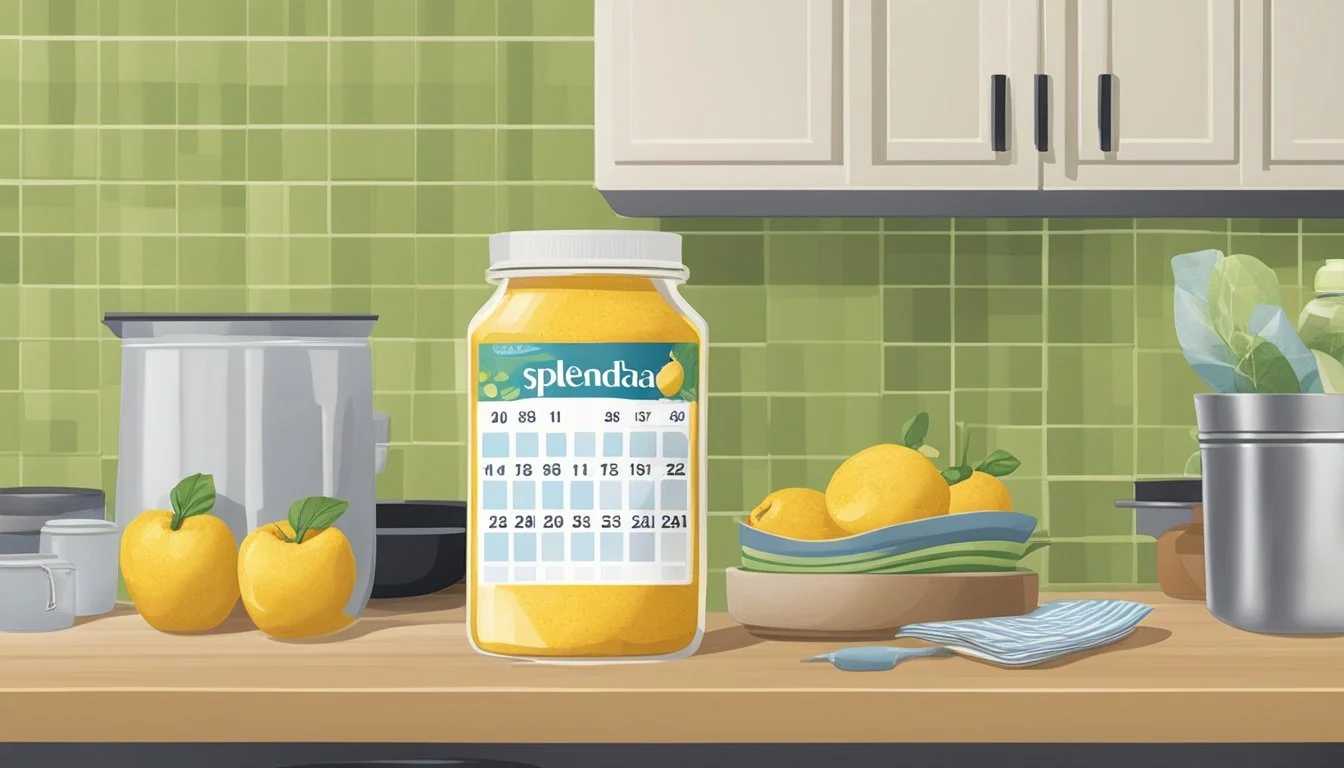How Long Does Splenda Last?
Understanding Artificial Sweetener Shelf Life
Splenda (how long does splenda last?), a popular artificial sweetener brand known for its key ingredient, sucralose, is a common sugar substitute found in many households and food establishments. Unlike sugar, which can degrade in quality over time, Splenda's stability under a variety of conditions makes it a convenient choice for those looking to reduce calorie intake or manage blood sugar levels. The shelf life of Splenda is a point of interest for consumers who value both food safety and minimizing waste.
When stored properly in a cool, dry place, Splenda's tabletop sweeteners, such as packets, jars, or pouches of granulated Splenda Original, Splenda Stevia, and Splenda Baking Blends, have a lengthy shelf life. These products are marked with Best By dates to guide consumers on when they can expect the product to maintain optimal quality and sweetness. While Splenda products may maintain sweetness even past these dates, the Best By date is a manufacturer's recommendation for when to consume the product to ensure the best experience.
In particular, certain Splenda products such as Splenda Coffee Creamers have specific storage guidelines once opened. They should be refrigerated and used within a set number of days to maintain quality and flavor. These recommendations reflect the brand's commitment to providing reliable and safe products for consumption, guiding users on how to best enjoy Splenda without comprising quality and taste.
Splenda Overview
Splenda is a notable brand in the artificial sweetener market, known for its variety of products designed to replace sugar. With a range of options from packets to baking blends, Splenda caters to diverse consumer needs with sweetness derived primarily from sucralose.
What Is Splenda?
Splenda is a brand of artificial sweetener, recognized predominantly for its key ingredient, sucralose. Unlike sugar, Splenda provides a sweet taste without the same caloric impact, making it a popular choice for those monitoring their sugar intake or managing calories.
Ingredients and Chemical Structure
The primary ingredient in Splenda is sucralose, a no-calorie sweetener that is about 600 times sweeter than sugar. Derived from sugar itself, its chemical structure is altered by replacing three hydrogen-oxygen groups with chlorine atoms, resulting in a substance that is not metabolized by the body for energy.
Other ingredients in different Splenda products may include:
Dextrose and maltodextrin to provide bulk and volume
Natural sweeteners like stevia, used in Splenda Stevia products
Ingredients suitable for baking, found in Splenda Baking Blends
Types of Splenda Products
Splenda offers a variety of products tailored to specific uses:
Granulated Splenda Original: A versatile option for sweetening beverages or for cooking and baking.
Splenda Packets: Convenient single-serving packets suitable for sweetening coffee or tea.
Splenda Stevia: A product line that uses stevia extract as the sweetening component, providing a no-calorie, natural alternative.
Splenda Baking Blends: Combines sucralose with other ingredients to offer a lower-calorie substitute for sugar in baking recipes.
In addition to the above, Splenda also provides jars and pouches of sweetener, ensuring there is a Splenda product suitable for tabletop use as well as culinary applications.
Shelf Life and Storage
When it comes to Splenda, understanding its shelf life and knowing the proper storage methods are crucial for maintaining its sweetness and quality. Recognizing signs of deterioration will help you determine if Splenda is still suitable for use.
Understanding Shelf Life
Splenda, a popular brand of artificial sweetener, is designed for long-term use. Products such as Splenda packets, jars, and pouches often come with "Best By" dates, indicating the period within which they are expected to retain their optimal quality. While the sweetener does not technically expire, its best quality is preserved when it is consumed before this date.
Shelf Life of Unopened Splenda:
Indefinite, when kept in a proper environment.Shelf Life of Opened Splenda Products:
Original, Stevia & Baking Blends: Best consumed close to opening for optimal taste.
Diabetes Care Shakes: Use within 14 days after opening and refrigerate.
Proper Storage Methods
To ensure Splenda retains its sweetness and does not deteriorate prematurely, it must be stored in appropriate conditions. A cool, dry place, away from direct sunlight and moisture, is ideal. Refrigeration after opening is recommended, especially for liquid Splenda products like Diabetes Care Shakes, to maintain quality and safety.
Storage Checklist:
Keep it in a cool, dry place.
Avoid exposure to direct sunlight.
Prevent contact with moisture.
Refrigerate certain liquid products after opening.
Signs of Deterioration
Splenda is resilient, but improper storage can lead to signs of deterioration. If you notice that your Splenda product has clumped, changed in color or texture, or has an off smell, these may be indicators that the product has been compromised. If pests or unwanted critters have infiltrated the packaging, this is also a sign that the Splenda should no longer be consumed.
Indicators of Compromised Quality:
Clumping of the sweetener.
Change in color or texture.
Unusual odors.
Presence of pests.
Health and Nutritional Profile
When considering Splenda as a sugar alternative, it is important to evaluate its caloric content, impact on blood sugar management, and safety as approved by regulatory agencies.
Caloric Content and Sweetness
Splenda, the commercial name for sucralose, is an artificial sweetener that is notably calorie-free. One of the appeals of Splenda is its ability to provide a high degree of sweetness without the added calories that come with traditional sugar. This makes it a popular choice for individuals seeking to reduce caloric intake or manage weight.
Impact on Blood Sugar and Diabetes
For those with diabetes and individuals monitoring their blood sugar levels, Splenda typically has a minimal effect on insulin levels. Splenda does not significantly alter blood glucose levels, a trait that can be particularly beneficial for individuals looking to manage diabetes.
Safety and FDA Approval
The safety of artificial sweeteners like Splenda is a common concern. The Food and Drug Administration (FDA) has conducted extensive reviews and studies regarding sucralose, concluding that it is safe for consumption. The FDA has established an Acceptable Daily Intake (ADI) for sucralose, set at 5 milligrams per kilogram of body weight per day, which is considerably higher than the average intake amounts.
Effects on Body and Diet
The consumption of Splenda and its effects on the body and diet are multifaceted, relating to weight management, gastrointestinal health, and potential risks. These impacts vary depending on individual health conditions and dietary patterns.
Weight Management and Obesity
Scientific findings suggest that while low-calorie sweeteners like Splenda are often used as a weight management tool, their effectiveness can be inconclusive. For some individuals, Splenda may support weight management efforts when used in moderation, alongside a balanced diet. However, there is research indicating that artificial sweeteners may also lead to weight gain in some cases, possibly due to changes in appetite or metabolic responses.
Gut Health and Microbiome Impact
Splenda's influence on the gut microbiome is a significant area of study. The microbiome is critical to overall health, influencing the immune system and the risk of diseases. Studies have shown that artificial sweeteners might alter the balance of bacteria in the gastrointestinal tract, potentially leading to inflammation or other digestive issues. Impacts on gut health can vary greatly among individuals, and the effects on long-term microbiome health require further research.
Possible Risks and Side Effects
Consumption of artificial sweeteners, including sucralose, may carry some potential risks and side effects. There is concern that long-term use might affect insulin resistance and may be associated with an increased risk of developing type 2 diabetes. However, more extensive and conclusive studies are necessary to fully understand the potential diseases associated with the continuous intake of Splenda and its impact on the gastrointestinal tract and immune system.
Food and Cooking with Splenda
When incorporating Splenda into food and cooking, it's essential to understand its heat stability and how it interacts with other ingredients, particularly in baking and beverage preparation. Splenda is versatile and can be used in a variety of sweet treats, from baked goods to ice cream, often requiring specific adjustments to achieve the desired taste and texture.
Baking and Cooking Adaptations
Baking with Splenda involves certain modifications to traditional recipes. Because Splenda is much sweeter than sugar, it is typically used in smaller amounts. Here are key considerations:
Volume: Since Splenda contributes less volume compared to sugar, one may need to alter other ingredients to compensate. For cakes and cookies, this might mean adjusting leavening agents like baking soda to maintain the desired consistency.
Browning: Splenda does not brown as sugar does. Bakers might use a small amount of molasses or honey to help with browning in baked goods.
Specifically for baked goods such as cookies and cakes, one can often substitute Splenda on a 1:1 ratio by volume for sugar, but this can alter the final product's texture. Additional ingredients like yogurt or applesauce may be introduced to retain moisture that sugar usually provides.
Beverages and Desserts
Splenda is also suitable for sweetening a variety of beverages and desserts. It dissolves well in both hot and cold liquids, making it a convenient option for sweetening coffee, tea, and homemade lemonades or smoothies.
Cold Beverages: Splenda can replace sugar in cold beverages like iced tea and cocktails without altering the flavor significantly.
Hot Beverages: For hot drinks, Splenda holds up to the heat and maintains sweetness, ideal for coffee and hot chocolate.
Desserts: In desserts such as ice cream or yogurt, Splenda provides a sweet flavor without the added calories of sugar. Chefs need to carefully measure the sweetener, as too much could impart a slightly bitter aftertaste.
The use of Splenda in beverages and desserts allows for a reduction in calorie intake while still providing a sweet flavor profile that satisfies cravings for sugar.
Comparisons and Alternatives
In considering how long Splenda lasts compared to its alternatives, consumers often evaluate a variety of sweeteners, both natural and artificial. Shelf life is a practical aspect alongside calorie count and sweetness level when choosing a sugar substitute.
Splenda versus Other Sweeteners
Splenda is known for its long shelf life, typically 24 months, without a noticeable degradation in sweetness. This makes it a competitive choice for those seeking long-term shelf stability.
Stevia: A plant-based sweetener considered to be a natural alternative with a shelf life comparable to Splenda.
Aspartame: Commonly found in brands like Equal and NutraSweet, aspartame is an artificial sweetener that is less stable over time and can break down when exposed to high temperatures.
Saccharin: Another artificial sweetener, best known as Sweet’n Low, also offers a considerable shelf life, though some people are sensitive to its distinctive taste.
Here is a comparison table for clarity:
Sweetener Type Shelf Life Sweetness compared to Sugar Splenda Artificial Up to 24 months ~600 times Stevia Natural Up to 24 months ~200-350 times Aspartame Artificial Less Stable ~200 times Saccharin Artificial Long ~300 times
Natural versus Artificial Sweeteners
Individuals consider not only the storage and longevity of sweeteners but also the source—whether they are natural or artificial.
Real Sugar: Known for its natural origin, it provides a different taste and texture and contains calories that may affect calorie intake.
Artificial Sweeteners: These typically offer a zero or low-calorie alternative. Their chemical composition, as in the case of Splenda (sucralose), aspartame, and saccharin, is designed to mimic the sweetness of sugar without contributing significantly to calorie intake.
Consumers weigh these factors based on dietary preferences, lifestyle, and any concerns around artificial ingredients or calorie control. Each sweetener has its distinct properties that cater to various needs and preferences.
Regulatory and Environmental Concerns
This section focuses on the regulatory measures and the environmental implications associated with the use of Splenda, a sucralose-based sweetener. The regulatory aspect will cover guidelines set forth by the FDA, while the environmental portion will discuss the impact of Splenda on environmental health.
FDA Regulations and Recommendations
The U.S. Food and Drug Administration (FDA) has approved the use of sucralose as a general-purpose sweetener for all food categories. Sucralose underwent over a hundred safety studies during its assessment process. These studies covered a range of potential health effects, including carcinogenic, reproductive, and neurological risks. The FDA concluded that sucralose was safe for consumption within the set acceptable daily intake (ADI).
Environmental Impact and Considerations
Studies have been published in the International Journal of Occupational and Environmental Health suggesting possible environmental concerns related to sucralose use. Sucralose contains chlorine atoms, and although this fact alone does not necessitate environmental risk, there is ongoing research into its long-term impact. Environmental health studies have noted that sucralose is not fully broken down in wastewater treatment processes, leading to its detection in surface and ground waters. The extent to which the presence of sucralose and its byproducts impact aquatic ecosystems and water quality remains a subject of study in the United States and internationally.
Consumer Use and Perceptions
The utilization and public perception of Splenda reflect broader trends in artificial sweetener use and brand recognition. Understandings of its longevity are important to both individual consumers and the food industry at large, influencing purchasing decisions.
Usage Trends and Statistics
The prevalence of Splenda in consumer kitchens and dining establishments highlights a shift towards low-calorie sweeteners. As a sucralose-based product, it's commonly found in a distinctive yellow packet and has become a staple for those looking to indulge a sweet tooth without the calories of sugar. Here are key usage trends:
Artificial Sweeteners: A significant increase in diet-conscious individuals has amplified the consumption of artificial sweeteners, with Splenda being a leading choice.
Diet Sodas and Beverages: As an ingredient in diet sodas, Splenda satisfies the demand for lower-calorie beverage options.
Longevity: Consumers appreciate that unlike sugar, which can spoil, Splenda lasts significantly longer, bolstering its appeal for long-term use.
Public Opinion and Sweetener Branding
Public perception of Splenda sways between appreciation for its sugar-like taste and concerns over artificiality. However, branding strategies have positioned Splenda as a key player:
Health Awareness: The push towards healthier lifestyles has heightened the product's relevance, particularly among those managing diabetes or seeking a low-calorie alternative.
Brand Trust: The consistent branding of the yellow packet has engendered consumer trust and recognition, making it a go-to sweetener.
These perceptions drive consumer behavior, influencing the frequent restocking of Splenda in households and its ubiquitous presence in coffee shops and restaurants.
Scientific Studies and Research
Scientific scrutiny has provided insights into the longevity and stability of Splenda (sucralose) through various clinical trials and research on long-term effects. This has helped assess its durability when used in different environments and conditions.
Clinical Trials and Testing
Clinical trials have been instrumental in understanding the persistence of sucralose in the human body. Findings from a 2016 study revealed that after consuming 250 milligrams of sucralose, roughly the amount found in four cans of diet soda, the concentration of this artificial sweetener in the blood could reach levels of 200 to 400 nanograms per milliliter (ng/mL). Interestingly, in some subjects, levels spiked beyond 1,500 ng/mL.
In animal studies, specifically those involving rats, researchers have observed the breakdown and excretion patterns of sucralose. It has been noted that Splenda remains stable at high temperatures, which supports its use in cooked or baked foods without significant degradation or loss of sweetness.
Research on Long-Term Effects
The innuendo surrounding artificial sweeteners and their long-term effects, including potential carcinogenic impacts, perpetuates caution amongst consumers. Studies delving into the relationship between artificial sweeteners like Splenda and cancers have been conducted.
One notable longitudinal study is the NutriNet-Santé investigation. Researchers sought to identify connections between artificial sweetener intake and obesity-related cancers. Their results suggested a slight elevation in risk for obesity-related cancers among consumers of artificial sweeteners. However, these findings require further examination to establish a direct causal link and to understand the implications for Splenda specifically.
In parallel, comparisons between Splenda and other alternatives, both artificial and natural, are ongoing to determine the safest and most sustainable options for consumers. These comparisons contribute to an extensive body of research that informs regulatory standards and public health recommendations.
FAQs
In addressing common questions about Splenda, this section provides factual information regarding its shelf life, storage recommendations, and differentiation from other sweeteners.
Common Questions
Does Splenda expire? While Splenda sweeteners are labeled with "Best By" dates, they do not spoil in the same manner as natural sugars. Properly stored Splenda can remain safe to use well beyond this date, maintaining sweetness without deteriorating into harmful substances.
Can Splenda cause headaches, dizziness, or nausea? There are individual reports of headaches, dizziness, and nausea which some consumers associate with various food additives, including artificial sweeteners like Splenda. However, research is inconclusive in establishing a direct causal relationship between Splenda consumption and these symptoms.
How does Splenda compare with other artificial sweeteners like aspartame and saccharin? Splenda, whose main ingredient is sucralose, is often preferred for having less aftertaste compared to other artificial sweeteners like aspartame and saccharin. Unlike aspartame, which can break down into formaldehyde, Splenda does not degrade into harmful compounds.
What is Splenda made of? Splenda contains sucralose, a no-calorie sweetener made from sugar by replacing three hydroxyl groups with chlorine atoms. It is commonly combined with bulking agents like maltodextrin and dextrose.
Is Splenda safe for people with diabetes? Splenda has a negligible effect on blood glucose levels, making it a suitable sweetener for individuals with diabetes as part of a balanced diet. It should be noted, however, that products containing Splenda can still have carbohydrates that can affect blood sugar.
How is Splenda used in foods? Splenda is versatile and heat-stable, used in a range of products from diet sodas to chewing gum. Its granulated form can be used for cooking and baking, allowing for a reduction in calories without sacrificing sweetness.
Where can Splenda be purchased? Splenda products are available in stores across the United States and can be bought online, including through Amazon. Customers should look for packaging that is intact to ensure product quality at the time of purchase.










